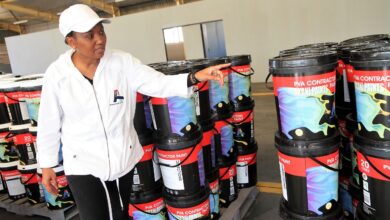How to start a Eco-friendly packaging and shipping supplies store in South Africa

In recent years, there has been a growing global awareness of the importance of sustainable practices. One area that has gained significant attention is packaging and shipping supplies. South Africa, a country known for its natural beauty and diverse wildlife, is also embracing the need for eco-friendly solutions. If you’re passionate about the environment and want to make a positive impact, starting an eco-friendly packaging and shipping supplies store in South Africa can be a rewarding venture. This article aims to provide a comprehensive guide to help you kickstart your sustainable business journey.
Step 1: Conduct Market Research Before embarking on any business venture, it’s essential to understand the market demand and competition. Conduct thorough market research to identify the target audience, their preferences, and existing competitors in the eco-friendly packaging and shipping supplies sector. This information will help you develop a unique selling proposition (USP) and tailor your products and services to meet customer needs effectively.
Step 2: Define Your Business Model and Products Consider the various aspects of your business, such as whether you want to operate as an online store, a physical retail outlet, or a combination of both. Determine the range of eco-friendly packaging and shipping supplies you wish to offer, including recycled cardboard boxes, biodegradable mailers, compostable packing peanuts, reusable bubble wraps, eco-friendly tapes, and more. Partnering with suppliers who share your commitment to sustainability is crucial.
Step 3: Develop a Sustainable Supply Chain Building a reliable and sustainable supply chain is vital for an eco-friendly packaging and shipping supplies store. Source your products from manufacturers and suppliers who prioritize eco-friendly materials and production methods. Aim for suppliers who utilize recycled or biodegradable materials, engage in responsible sourcing, and have certifications for environmental standards.
Step 4: Establish Your Online Presence In today’s digital age, having a strong online presence is essential for any business. Create a user-friendly website that showcases your eco-friendly products, emphasizes their benefits, and allows customers to easily browse and purchase items. Incorporate sustainable practices in your website design, such as utilizing green hosting providers and optimizing energy consumption. Leverage social media platforms to raise awareness, engage with potential customers, and share valuable content related to sustainability.
Step 5: Educate and Engage Customers Promote the importance of eco-friendly packaging and shipping practices through educational initiatives. This could include publishing blog posts or articles on your website, sharing tips on sustainable packaging, and partnering with local environmental organizations for events and workshops. Engage with customers on social media and provide excellent customer service to build trust and loyalty within your eco-conscious community.
Step 6: Collaborate with Like-minded Businesses Establish partnerships with local businesses that share your sustainability values. This collaboration could involve cross-promotion, joint marketing campaigns, or even bundling products to offer customers a comprehensive eco-friendly package. By working together, you can amplify your impact and attract a wider customer base.
Step 7: Measure and Improve Your Environmental Footprint Regularly assess your business’s environmental impact and seek ways to improve it. Consider implementing recycling programs, reducing energy consumption, and offsetting carbon emissions. Monitor your progress and share updates with your customers to showcase your commitment to sustainability and inspire others to follow suit.
Starting an eco-friendly packaging and shipping supplies store in South Africa is a meaningful and timely business opportunity. By providing sustainable alternatives, you can contribute to reducing environmental pollution and promoting a greener future. Remember to conduct thorough market research, define your business model and product range, develop a sustainable supply chain, establish a strong online presence, educate and engage customers, collaborate with like-minded businesses, and consistently improve your environmental footprint. Embrace the challenge and let your eco-friendly store make a positive impact in South Africa’s sustainable business landscape.




